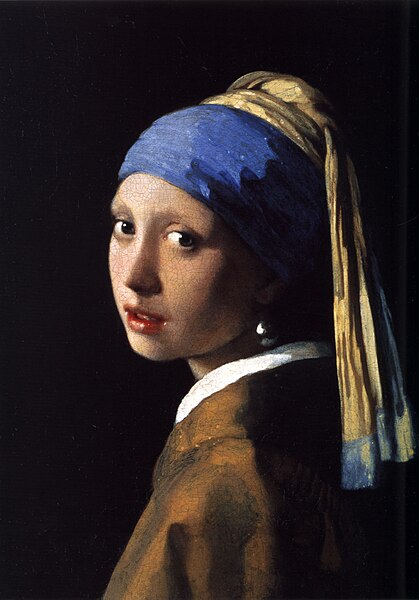Pretty Girl: Girl with a Pearl Earring makes a stop at The Frick in New York, the last leg of its American tour
Dutch Master Johannes Vermeer (1632-1675) had a very small output for an artist with such an outsized reputation. After all, Colin Firth played him on the big screen in 2003, cementing his status as a rock star. Yet he is believed to have only produced some 36 paintings before he died prematurely at age 43, leaving a wife and eleven children behind. 
Johannes Vermeer (1632 – 1675), Girl with a Pearl Earring, c. 1665, oil on canvas, Royal Picture Gallery Mauritshuis, The Hague
But the world is most familiar with his artistic legacy, specifically one small painting: Girl with a Pearl Earring (c. 1665), an exquisite work that entered the popular imagination with the eponymous film and is now on view at The Frick Collection until January 19, 2014, along with 14 other Dutch masterpieces on loan from the Royal Picture Gallery Mauritshuis in The Hague.
Seeing the painting for the first time IRL (in real life, to use Internet slang) is an experience akin to seeing its more famous cousin, the Mona Lisa (Leonardo da Vinci, 1503-1506), at the Louvre. In fact, Girl with a Pearl Earring has been dubbed "the Dutch Mona Lisa" because of its similarly modest size, enigmatic expression, and huge reputation.
Like the Mona Lisa, the inspiration for Girl remains a mystery, though the Mona Lisa is commonly thought to depict the wife of a Florentine cloth merchant, Lisa Gherardini — or some other specific person. Girl, on the other hand, is not widely thought to be a copy of a person in real life. She might possibly have been modeled after Vermeer's eldest daughter, Maria, but she may also (and more probably, some think) be a tronie, a popular Dutch subcategory of 17th century portraiture that depicts characters in an idealized or exaggerated manner, with telling adornments (a headdress or a feathered beret) meant to convey a certain effect. They're character types (not specific individuals, though the features of specific individuals can be used), dressed up to play a part — in this case, "the pretty girl."
Girl's headscarves in ultramarine blue and yellow spell "turban" and "exotic" and are consistent with a tronie. The dangling pearl earring, which is enormous and also probably not real, glistens. The curators posit that it may be glass because of its size, and that it was painted a pearly white to simulate the genuine article. Or it may be a product of the artist's imagination. Regardless, it's a point of light, as are the lips and facial features.
Pages: 1 · 2
More Articles
- Ferida Wolff's Backyard: Awesome Goldfinches, Part of the Incredible Possibilities That Nature Might Offer
- Julia Sneden Wrote: Love Your Library
- Rebecca Louise Law: Awakening on View at Honolulu Museum of Art
- Rose Madeline Mula Writes: I’ve Got A Secret – NOT!
- Annandale-on-Hudson, New York ... With Pleasure: Pattern and Decoration in American Art 1972 - 1985
- Lynn Hershman Leeson: Who Has Celebrated Her 80th Birthday and a New Exhibition, TWISTED, at The New Museum in New York City
- Explore the Royal Collection and an Exhibition, Masterpieces From Buckingham Palace
- The Autobiography of a Garden at The Huntington, a Joy for Viewers and Gardeners
- What? You Have Nothing to Do? Explore Some Museums Collections Online
- Rumors Of War by Kehinde Wiley: Monuments and Their Role in Perpetuating Incomplete Histories and Inequality







